Technology
Toaster That Butters the Toast
Man, given the laziness of the average person, this should have been a bestselling item. Unless...the notion of a reservoir full of old butter sitting at room temperature for weeks was a turn-off.Full patent here.


Posted By: Paul - Mon Jul 15, 2024 -
Comments (2)
Category: Domestic, Food, Inventions, Patents, Technology, 1960s
Follies of the Madmen #599
Who knew that electrical appliances could be such rivals? And is that gal's Bride of Frankenstein hairdo a result of the scary radio mystery, or just her natural style?If you go to the source, you can magnify the text.

Posted By: Paul - Wed Jun 26, 2024 -
Comments (2)
Category: Radio, Rivalries, Feuds and Grudges, Technology, Advertising, 1940s
The Obayashi Space Elevator
Back in 2012, the Obayashi Corporation announced that it would have built a functioning space elevator by 2050, and that construction of it would begin in 2025.But when journalists recently checked in with the company to see if all was proceeding on schedule, they found (no surprise) that no, the company won't be starting construction of a space elevator next year. But the company still claims that it's "engaged in research and development, rough design, partnership building, and promotion."
So I doubt that I'll get to see a space elevator in my lifetime.
More info: ScienceAlert.com, Obayashi Corporation
Posted By: Alex - Mon Jun 10, 2024 -
Comments (2)
Category: Technology, Space Travel, Transportation
Mystery Gadget 111
What will this machine do? Hint: atmospheric.The answer is here.
Or after the jump.

More in extended >>
Posted By: Paul - Sun Jun 02, 2024 -
Comments (0)
Category: Technology, 1930s
The Ediphone Sets You Free
Businessman likes to imagine that because he doesn't always have enough time to dictate correspondence to his secretary that he's clearly "chained down like a galley slave."More info about Ediphones.

The Reporter with Postage and the Mailbag - Sep 1939
Posted By: Alex - Tue May 21, 2024 -
Comments (0)
Category: Technology, Telephones, Advertising, 1930s
Miss AI
Entries are now being accepted for the world's first "Miss AI" contest.One of the organizers of the pageant offered the following justification for it: "Considering real beauty pageants are criticised for dehumanising women, lets dodge that bullet by having contestants which aren’t human to begin with!"
More info: euronews.com

The contestants will be judged by a panel that consists of two humans and two AI models. They don't explain how the AI models will make their decision or cast their votes. I assume the human creators of the AI models will be the actual judges.


Although this may be the first "Miss AI" contest, it won't be the first computer-generated beauty queen. As we've previously posted, back in 1964 engineers at California Computer Products unveiled "Miss Formula," whom they described as "a computer's idea of how the perfect female should look."
While the technology has advanced, the basic idea remains the same.
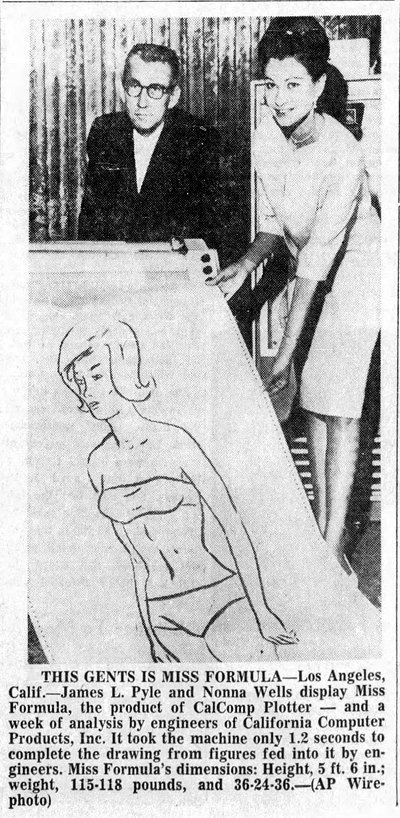
Tampa Tribune - July 31, 1964
Posted By: Alex - Fri May 03, 2024 -
Comments (5)
Category: Awards, Prizes, Competitions and Contests, Technology, AI, Robots and Other Automatons
Mystery Gadget 110
What is the purpose of this machine?The answer is here.
Or after the jump.

More in extended >>
Posted By: Paul - Wed May 01, 2024 -
Comments (1)
Category: Technology, 1920s
Meet Miss Electronic
Once upon a time answering machines were considered strange and dumbfounding.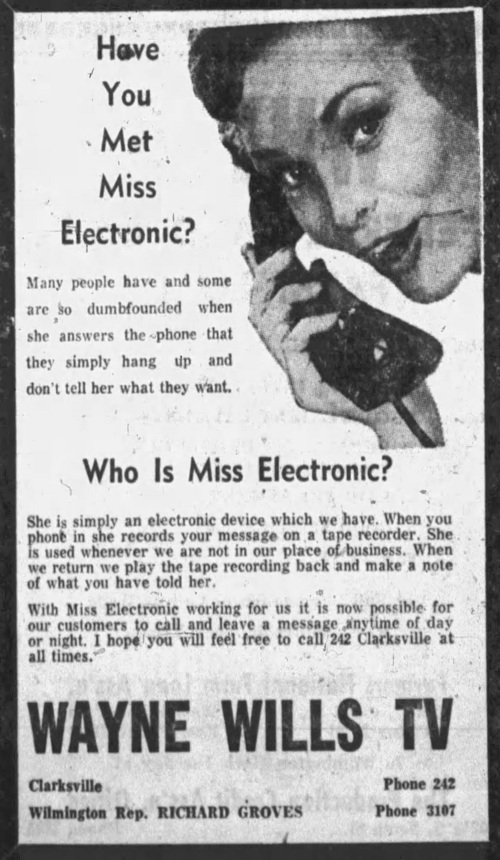
Wilmington News Journal - Mar 31, 1956
Posted By: Alex - Thu Apr 18, 2024 -
Comments (1)
Category: Technology, Telephones, 1950s
A brief history of mass-production shaving machines
Around 1780: "An anonymous British printmaker, perhaps from Birmingham, issued a satire of mechanization and factories occuring during the Industrial Revolution, in the form of an imaginery 'New Shaving Machine, whereby a number of persons may be done at the same time with expedition, ease, and safety.'" (text from historyofinformation.com)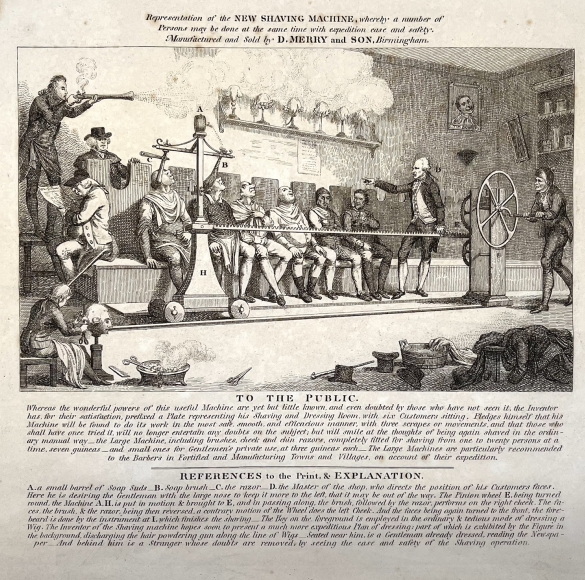
Around 1825: "British illustrator and caricaturist Robert Seymour... issued Shaving by Steam... In his creation of this print Seymour was undoubtedly inspired by an earlier anonymous print entitled 'New Shaving Machine.' The sign above the door on the right in Seymour's image announces 'Patent Shavograph!!!'" (text from historyofinformation.com)
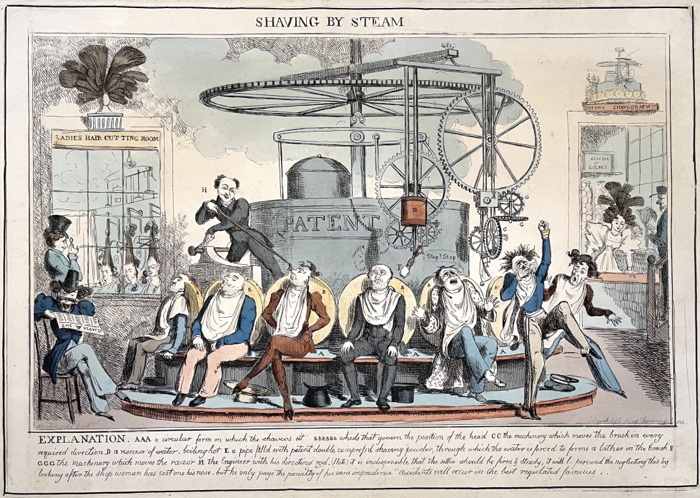
Oct 1960: English comedian Eric Sykes built a working "New Shaving Machine" (modeled from the 1780 print) on a pilot show for a proposed television series called 'Brainwaves.' The premise of the show was recreating strange old-time inventions. However, the show never aired.
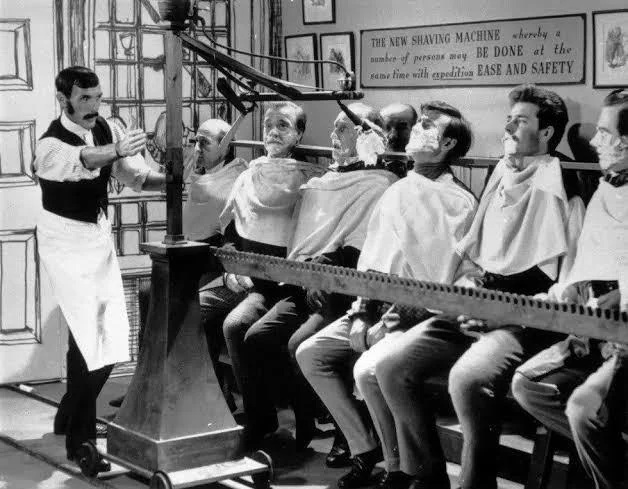
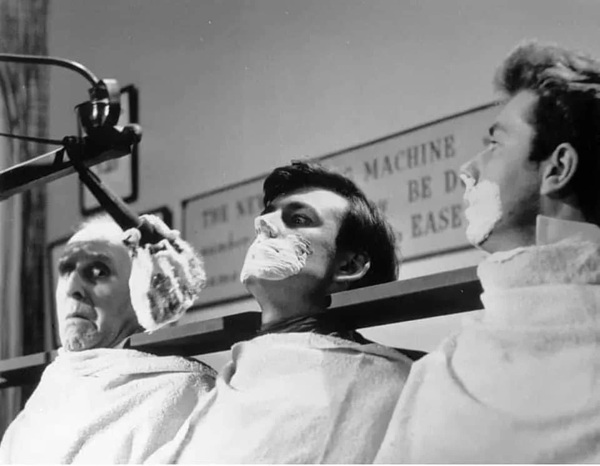
images source: vintag.es
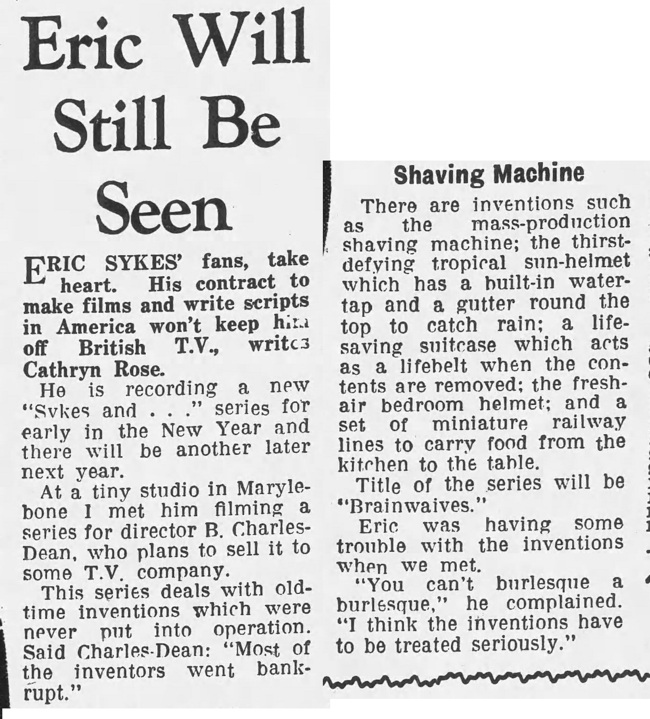
Lincolnshire Echo - Sep 29, 1960
History via reddit user KBHoleN1
Posted By: Alex - Fri Mar 29, 2024 -
Comments (0)
Category: Technology, Satire
Snail Dough Maker
Thankfully it's for making dough to wrap snails in, rather than making dough out of snails.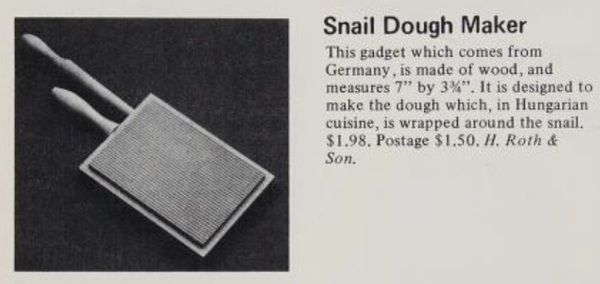
source: Catalog of the Unusual (1973), by Harold H. Hart
Posted By: Alex - Sat Mar 16, 2024 -
Comments (1)
Category: Food, Technology

| Who We Are |
|---|
| Alex Boese Alex is the creator and curator of the Museum of Hoaxes. He's also the author of various weird, non-fiction, science-themed books such as Elephants on Acid and Psychedelic Apes. Paul Di Filippo Paul has been paid to put weird ideas into fictional form for over thirty years, in his career as a noted science fiction writer. He has recently begun blogging on many curious topics with three fellow writers at The Inferior 4+1. Contact Us |




